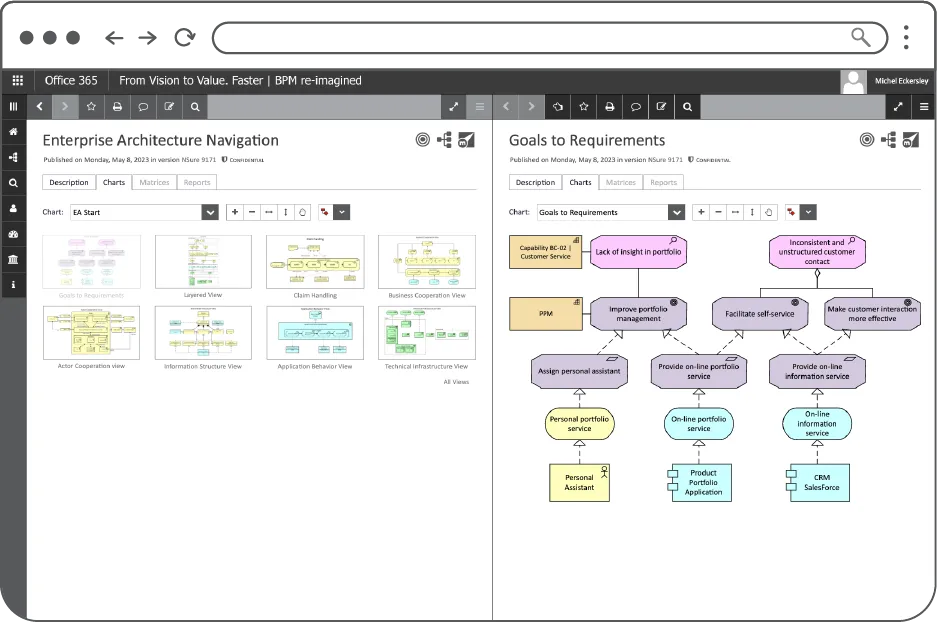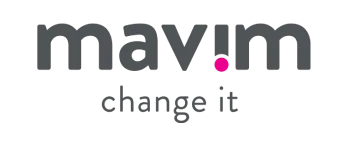Overview
Most believe Enterprise Architecture is yet another IT function. But its core purpose has nothing to do with IT. EA involves thinking about the business as a conceptual model, separate from the products and services it uses, and instead seeing it as the total structure of all its processes and how they connect to transform data into useful information. With technology as the tool for delivering that vision.
And that’s why Mavim for EA works – for thousands of enterprise architects worldwide. Because our expertise in capturing and modeling processes positions you for success: a single source of truth about what really happens within an organization’s dataflows and workflows. Gathering together all the right information for strategic decision-making that makes the business more capable of reaching its goals.
Mavim Empowers an Integrated Approach to Transformation
Regardless of starting point

Capabilities
Visualizations for business users
Leverage Mavim to create free form designs, which depict and orchestrate the flow of work across the organization.
Metadata & Archimate® 3.0
Mavim supports ArchiMate®, including the full notation, meta model, as well as all architectural models.
Customer Journey Mapping
Leverage Mavim to visualize customer journeys and link them to business processes, roles & responsibilities, and IT.
One Central Visio Repository
Mavim provides simple storage of EA models and documentation, which facilitates collaboration among both business and IT end-users.
Why EA with Mavim ?
Enterprise Architecture works to align resources – like people, processes, and technology – with the objectives of the business as a whole, aiming for advantages and improvements that increase the chances of success. That can only happen if the right information, in the right format, is available to the people making the decisions – complete, accurate, and in real time.
That’s why Mavim lets you create a central repository for all information, so everything’s in a place where it can be put to work. It’s also why it connects seamlessly to desktop applications like Visio and the international architecture language and diagramming technique ArchiMate®: with a user-friendly interface and experience many people are already familiar with, communicating and supporting decisions gets a lot easier. And with reporting and visualizing tools that bring disparate departments and ways of working into one tool, it’s far easier to see how those decisions affect the business as a whole.
The discipline of Enterprise Architecture is transforming into a holistic worldview, seeking to understand the organization as a whole rather than separate functions. That’s why EA with Mavim works for so many. It connects, integrates, and joins together … driving business value for all.

